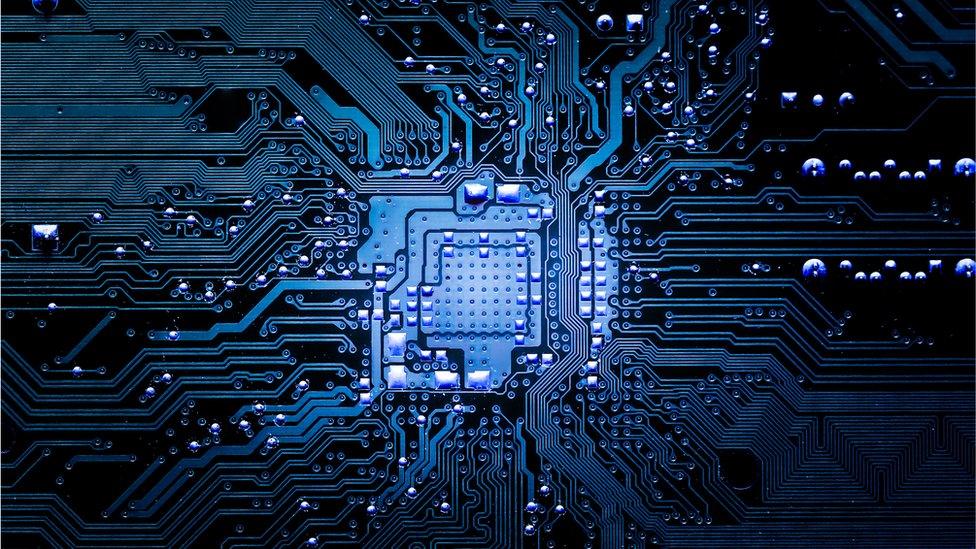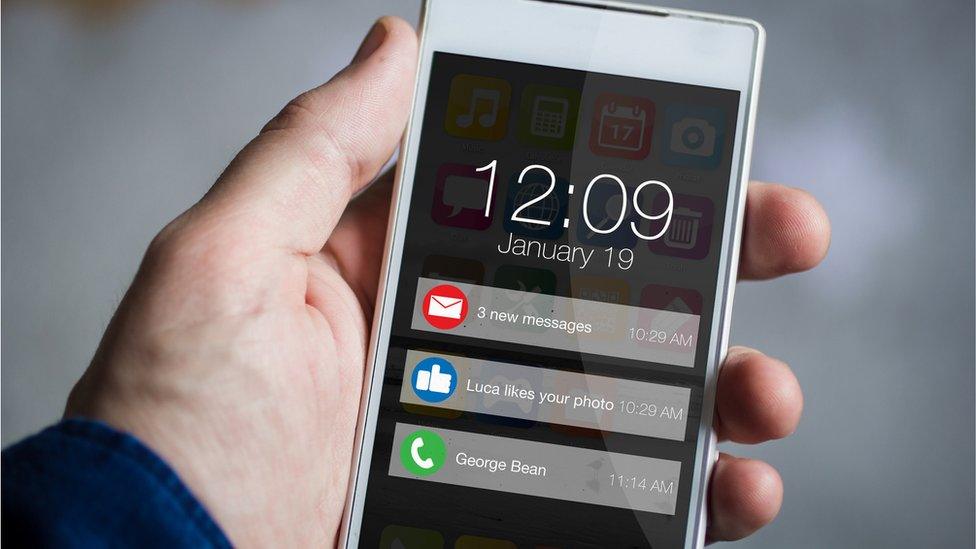Beating the electronic speed limit with light
- Published
- comments

A speed limit is looming for computer chips
The heart of any smartphone, tablet or computer is an electronic chip. And that's the problem.
If you can imagine a single chip containing thousands of transistors the size of bacteria, that's what they were like in the 1970s. These days some chips contain billions of tiny semiconductor switches.
Over the decades, these chips have been getting faster and faster. But a speed limit is looming.
The electrons rushing through the copper connections can't go much quicker because they start clumping together instead of flowing freely.
If we want our devices to go even faster, we'll have to drop electrons in favour of photons. In other words, light.
Photons already carry information down many cable TV and phone lines.
But to create the optoelectronic equivalent of a silicon chip the devices that handle the photons - the equivalent of today's transistor switches - will have to be much smaller and faster.
In the laboratory at Heriot-Watt University in Edinburgh, assistant professor Dr Marcello Ferrera has taken a big step towards making that a reality.
"The idea is that we transport, store and process information but instead of using an electrical signal we use an optical signal.
"So we use photons instead of electrons."

Dr Marcello Ferrera is experimenting with a material commonly used in smartphone touch screens
Dr Ferrera's innovation has been to construct what is in effect a gate for light analogous to the transistor gates for electrons which are, in their millions, at the heart of our digital devices.
It manipulates light using light.
Dr Ferrera and his team did it by illuminating a material with ultrafast laser pulses of two different colours simultaneously.
"We proved that we can efficiently, and in an ultrafast fashion, alter the optical properties of this material," he says.
"So we can actually alter the way light propagates."
How fast is ultrafast?
"The timescale is 100 femtoseconds, where one femtosecond is one-millionth of a billionth of a second."
To create such an ultrafast device requires a type of material that can turn opaque or transparent on demand - that behaves like a semiconductor and like glass.
Into the cloud
One candidate is indium tin oxide.
Instead, Dr Ferrera is using aluminium zinc oxide (AZO), not least because aluminium is altogether easier to come by.
Another advantage is that while AZO's use in photonics is new, it is commonly used elsewhere in digital technology: it plays a key role in touch screens.
Dr Ferrera believes this new line of research could lead to much faster devices, although much of the processing power is likely to be taken out of pockets and into the cloud.
"The idea in the future could be one of moving the performance of our devices away from our device," he says.
"So instead of having an ultrafast computer in our pocket, which is the strategy we are using today, we can have a ginormous - if you want - supercomputer somewhere and our mobile would be only connected to this super unit.
"And so if we have a new set of photonic components that can process information at ultrafast speed then we can create these data hubs where the actual performances of our devices can be drastically increased."